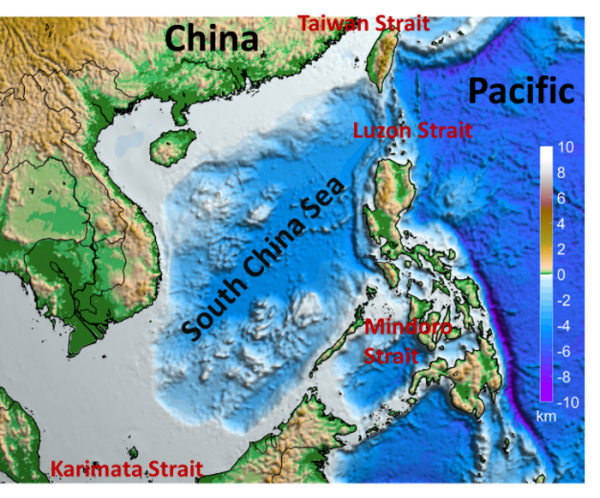A research team led by Prof. GAN Jianping, director of the Center for Ocean Research Hong Kong and Macau (CORE) at The Hong Kong University of Science and Technology (HKUST), carried out field observations and conducted numerical simulations in the South China Sea (SCS) recently and revealed the never-before-seen characteristics of the three-dimensional ocean motion in the SCS through geophysical fluid dynamic theory. The complex ocean circulation system controls the energy conversion and water mass transport in the SCS, subsequently affects the biogeochemical processes, carbon budget, marine ecological environment health, regional climate change, and the sustainable economic and social development in surrounding countries and regions, which accounts for about 22% of the world's population. Studies on the SCS circulation and dynamics are regarded as the foundation and epitome of understanding the SCS.
In the past few decades, there has been growing global attention to ocean circulation research in the SCS. However, scientific understanding of the three-dimensional water movement in this region is still very limited, ambiguous, and sometimes even misunderstood. This is caused by the lack of observations, reliable numerical model, and the knowledge of the complicated physical processes in the SCS circulation.
Until recently, based on observations, numerical simulations, and geophysical fluid dynamics reasoning, a research team led by Prof. Gan, who is also Chair Professor at HKUST’s Department of Ocean Science and Department of Mathematics, validated that the SCS rotating circulation has a three-layered structure, where currents rotate counterclockwise, clockwise and clockwise in the upper, middle and bottom layers, respectively. The study also found that the three-layered rotating circulations are composed of the dynamically active ‘hotspots’ of intensified currents along the steep continental slope surrounding the deep basin, instead of an orderly structure in the entire region as previously conceived. Slope currents are mainly controlled by the combination effects of monsoon, Kuroshio intrusion, and the unique topography, and are constantly adjusted and regulated by the multiscale oceanic processes. The study demonstrated the three-dimensional structure and physical mechanism of the SCS circulation for the first time, and clarified previous misunderstanding of the water mass motion in this region. Based on these findings, Prof. Gan's team created the WavyOcean, a 3D simulation and visualization system for ocean circulation and biogeochemical processes in the SCS, which is validated and constrained by both observations and dynamics reasoning.
Read more at Hong Kong University of Science and Technology
Image: Geographical location and bathymetry of the South China Sea (Credit: HKUST)


